
Phantasy Star is a role-playing video game (RPG) developed by Sega and released for the Master System in 1987. One of the earliest Japanese RPGs for consoles, Phantasy Star tells the story of Alis on her journey to defeat the evil ruler of her star system, King Lassic, after her brother dies at his hands. She traverses between planets, gathering a party of fighters and collecting the items she needs to avenge her brother's death and return peace to the star system. The gameplay features traditional Japanese RPG elements including random encounters and experience points. All the characters have predefined personalities and abilities, a unique element compared to the customizable characters of other RPGs of the era.

Sonic the Hedgehog is a 1991 platform game developed by Sonic Team and published by Sega for the Genesis/Mega Drive. It was released in North America on June 23 and in PAL regions and Japan the following month. Players control Sonic the Hedgehog, who can run at near supersonic speeds; Sonic sets out on a quest to defeat Dr. Robotnik, a scientist who has imprisoned animals in robots and seeks the powerful Chaos Emeralds. The gameplay involves collecting rings as a form of health, and a simple control scheme, with jumping and attacking controlled by a single button.
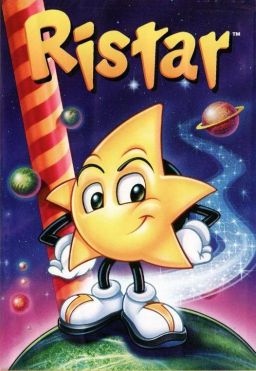
Ristar is a 1995 platform game developed and published by Sega for the Sega Genesis. The game stars an anthropomorphic cartoon star who uses his hands and long, stretchable arms to both move and fight enemies. Reception for the game was generally positive, but the game's initial release was overshadowed due to the imminent ending of the Genesis's lifecycle and the succession of the Sega Saturn and other fifth generation video game consoles.

Phantasy Star II is a science fantasy role-playing video game developed and published by Sega for the Sega Genesis. It was released in Japan in 1989, North America in 1990, and in Europe in 1990. It was later ported to a variety of different platforms. An updated remake, Phantasy Star Generation 2, was released for the PlayStation 2 in 2005 in Japan.

Altered Beast is a 1988 beat 'em up arcade video game developed and manufactured by Sega. The game is set in Ancient Greece and follows a player character chosen by Zeus to rescue his daughter Athena from the demonic ruler of the underworld, Neff. Through the use of power-ups, the player character can assume the form of different magical beasts. It was ported to several home video game consoles and home computers. It was the pack-in game for the Mega Drive when that system launched in 1988.
The Shining series is a brand of role-playing video games published by Sega, who owns the property. The first game, Shining in the Darkness, was a first-person dungeon crawler with randomly encountered, turn-based battles. The next game released in the series was Shining Force, which was a turn-based strategy style tactical role-playing game with battle scenes acted out with sprites. Other directions include Shining Soul, a dungeon crawl action role-playing game with roguelike elements, and a number of traditional Japanese role-playing games. Shining Resonance Refrain was released on PlayStation 4, Xbox One, Steam PC and Nintendo Switch worldwide across 2018.
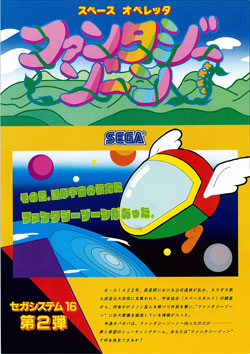
Fantasy Zone is a 1986 arcade video game by Sega, and the first game in the Fantasy Zone series. It was later ported to a wide variety of consoles, including the Master System. The player controls a sentient spaceship named Opa-Opa who fights an enemy invasion in the titular group of planets. The game contains a number of features atypical of the traditional scrolling shooter. The main character, Opa-Opa, is sometimes referred to as Sega's first mascot character.

Shining in the Darkness, released as Shining and the Darkness in Japan, is a 1991 role-playing video game for the Mega Drive/Genesis video game console. It was one of the first role-playing games released for the system, and was the first in the Shining series.

Phantasy Star IV: The End of the Millennium is a role-playing video game developed and published by Sega for the Sega Genesis. It was released in Japan in 1993 and Europe and North America in 1995. It is the fourth and final game in the original Phantasy Star series, concluding the story of the Algol Star System. Phantasy Star IV kept many of the gameplay elements of the previous game, including turn-based battles, overhead exploration, and magic spells. It received mixed reviews upon its release, but has since been subject to much more positive retrospectives, and it is considered one of the greatest video games of all time. The game was also released for the Wii Virtual Console in 2008, and the Nintendo Switch Online + Expansion Pack in 2021, and has also been included in various Sega emulated collections.

Golden Axe is a side-scrolling hack-and-slash video game released by Sega for arcades in 1989, running on the Sega System 16B arcade hardware. Makoto Uchida was the lead designer of the game, and was also responsible for the creation of the previous year's Altered Beast. The game casts players as one of three warriors who must free the fantastical land of Yuria from the tyrannical rule of Death Adder, who wields the titular Golden Axe.
1989 saw many sequels and prequels in video games, such as Phantasy Star II, Super Mario Land, Super Monaco GP, along with new titles such as Big Run, Bonk's Adventure, Final Fight, Golden Axe, Strider, Hard Drivin' and Teenage Mutant Ninja Turtles. The year also saw the release of the Sega Genesis and TurboGrafx-16 in North America, and the Game Boy worldwide along with Tetris and Super Mario Land.

The Revenge of Shinobi, released in Japan as The Super Shinobi, is a hack-and-slash action video game developed and published by Sega in 1989. It was the first Shinobi game developed for the Sega Genesis, and was later released on the coin-operated version of that console, the Mega-Tech.
Phantasy Star is a series of console role-playing video games and other supplementary media created by Sega. The series debuted in 1987 on the Master System with Phantasy Star, and continues into the present with Phantasy Star Online 2 and other extensions of the Phantasy Star Online sub-series. Each of the games in the series features a science fantasy setting featuring a cross-genre combination of magic and technology.

Phantasy Star Collection is a compilation of the Phantasy Star video games. When released for the Sega Saturn in Japan in 1998, it featured the first four games in the series, whereas the Game Boy Advance version, released four years later in North America and five in Europe, features the first three. The North American and European versions were produced by Digital Eclipse. The Saturn version was later ported to the PlayStation 2 in Japan with more games added.
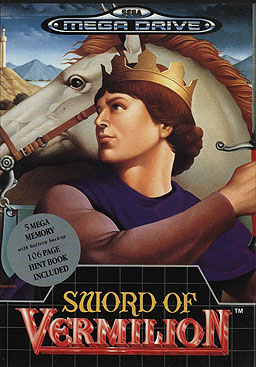
Sword of Vermilion is an action role-playing game developed and published by Sega for the Mega Drive console in 1989. It was released in 1990 in North America and 1991 in Europe. It was the first console exclusive game designed by the Sega AM2 studio. The game is part of the Sega Genesis Collection for the PlayStation 2 and PlayStation Portable, and was available on the Wii's Virtual Console. In 2021, it was added to the Nintendo Switch Online + Expansion Pack.

Valis III is a 1990 action-platform video game originally developed by Laser Soft, published by Telenet Japan and NEC for the TurboGrafx-CD. A Sega Genesis version was released in 1992. It is the third entry in the Valis series. It stars Yuko Asou, a Japanese teenage schoolgirl chosen as the Valis warrior and wielder of the mystical Valis sword after the events of Valis II. King Glames, wielder of the sword Leethus, leads denizens of the dark world to conquer both Vecanti and Earth, seeking refuge for his people amid the destruction of their planet. Together with the demon warrior-maiden Cham and her sister Valna, Yuko must prevent Glames from destroying both worlds. Through the journey, the player explores and searches for items and power-ups while fighting enemies and defeating bosses.
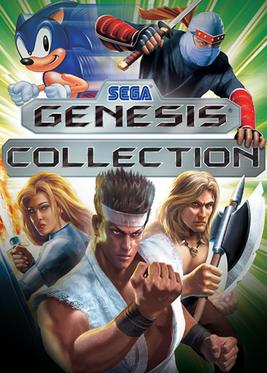
Sega Genesis Collection is a compilation of video games developed by Digital Eclipse and published by Sega for PlayStation 2 and PlayStation Portable. The collection includes twenty-eight Sega Genesis games from a variety of genres, as well as unlockable classic Sega arcade games, with different sets of arcade games for the PlayStation 2 and PlayStation Portable versions. A sequel was released in 2009 called Sonic's Ultimate Genesis Collection for PlayStation 3 and Xbox 360.
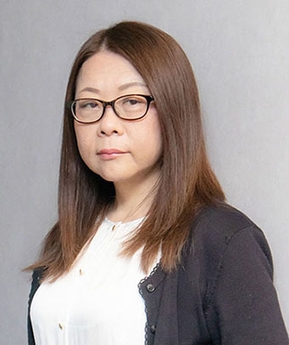
Rieko Kodama, also known as Phoenix Rie, was a Japanese video game artist, director, and producer employed by Sega from 1984 until her death. She is primarily known for her work on role-playing video games including the original Phantasy Star series, the 7th Dragon series, and Skies of Arcadia (2000). She is often recognized as one of the first successful women in the video game industry.

Sonic's Ultimate Genesis Collection is a compilation of video games developed by Backbone Entertainment and published by Sega for PlayStation 3 and Xbox 360. The compilation features 48 Sega games which were previously released for the Sega Genesis, arcades and the Master System. It is the sequel to the Sega Genesis Collection released previously for the PlayStation 2 and PlayStation Portable, but contains 16 more games.
Kotaro Hayashida, also known by the pseudonym Ossale Kohta (オサール・コウタ), is a Japanese video game designer best known for his work at Sega, which he joined in 1983. He has worked on games such as Alex Kidd in Miracle World and Phantasy Star.















